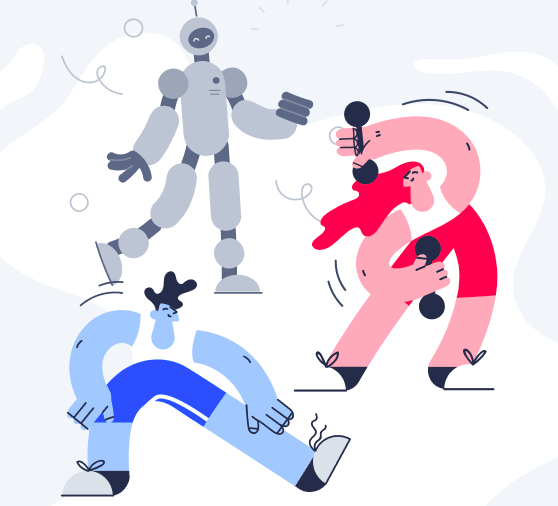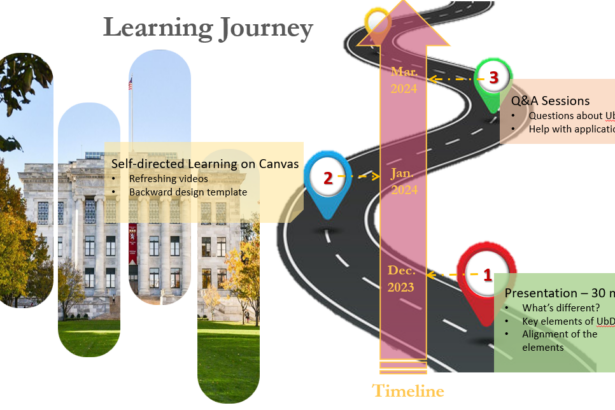Both of my parents have chronic diseases that require consistent self care. Because of the lack of medical knowledge and knowledge about biology in general , difficulties in comprehension have arisen when my parents receive information in a formal setting such as the hospital. Whenever informal learning happens (e.g., google a medicine to learn about its side effect), it has been challenging for my parents to be a critical consumer of the information, resulting in their beliefs in many medical myths and misinformation. Therefore, I designed a WeChat mini program to provide interactive health literacy for my family.
I specifically selected WeChat mini program as the platform to convey my design ideas because WeChat is the widely accessible and popular social media used in China. Inside WeChat, mini program is similar to an application but does not require extra downloading, serving the convenience of the usage. My mini program will be in Chinese because my parents do not understand English.
The followings are screenshots of my prototype of the mini program:

This series of splash and loading pages shows what the end users will see when opening the mini program. The logo of the mini program is my WeChat account photo because my parents thought that it is a really motivative picture 🙂 The direct English translation of the name “健康顽家” is “Health Player.” In Chinese, the word “健康“ means health. The word “顽家” has the same pronunciation as “player,” but I changed one character inside the word so that it also contains the connotation of being a stubborn family. Therefore, the name of the mini program conveys the idea of working as a family to persist on self care in a fun way.
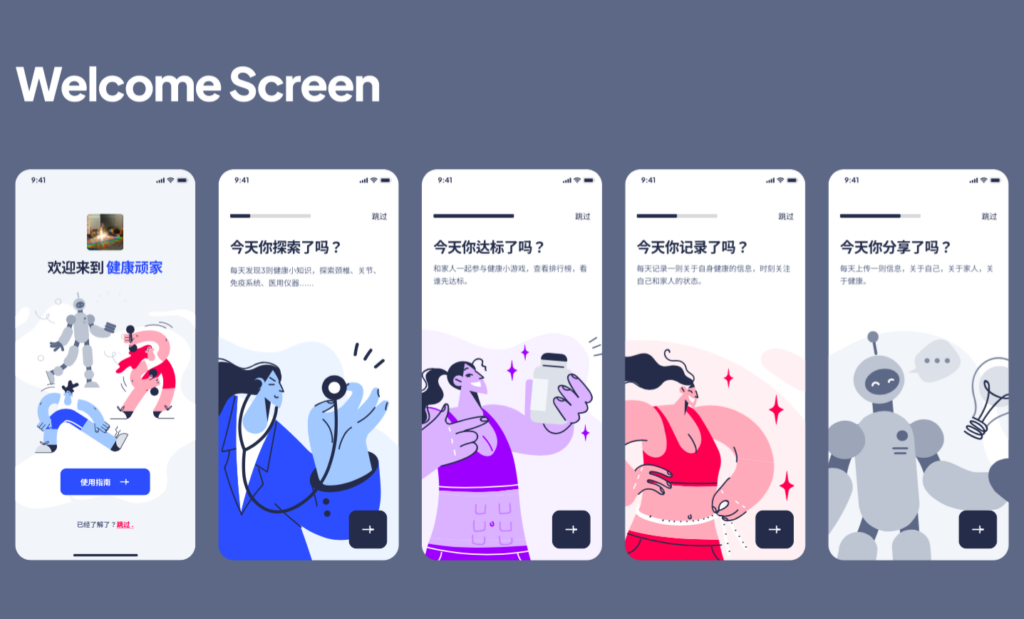
The first page is a welcome page that leads you to the introduction/ home pages of the four sections of the mini program. The first section, “Have you explored today”, refers to a section that encourages the users to learn about three pieces of new knowledge about health everyday and got tested. The second section, “Have you reached your goals today”, refers to a section that invites the users to participate in different health activities, compete with each other, and see everyone’s ranking. The third section, “Have you documented today”, refers to a section that asks the users to document one piece of information about their daily health. The final section, “Have you shared today”, refers to a section that asks the users to upload one piece of information that enhance the community knowledge and challenges other users to critically consume each other’s submission.
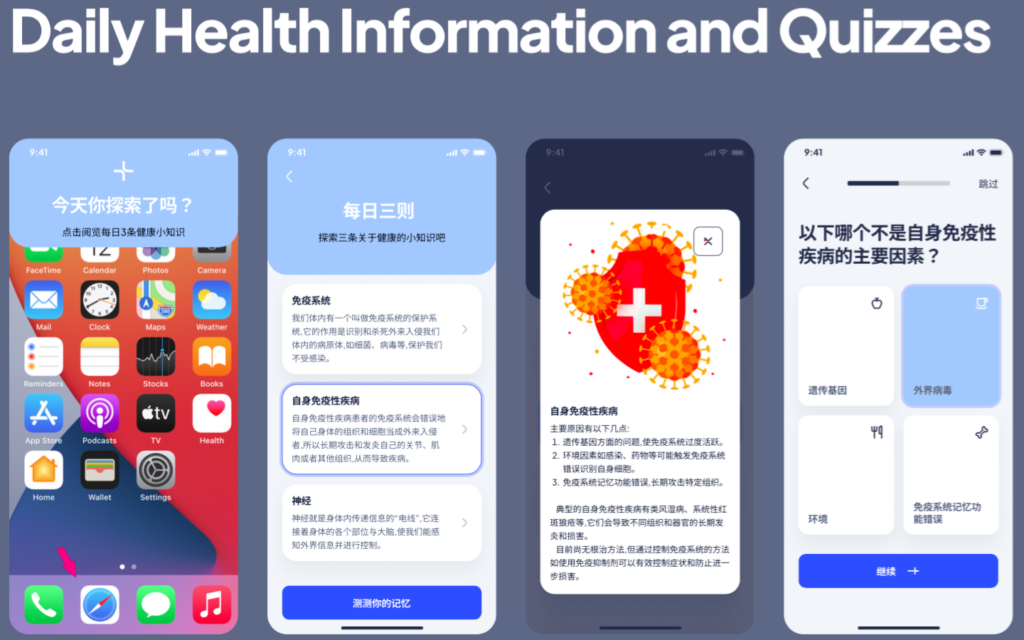
The first section, “Have you explored today”, appears in the format as a push notification that can be opened. Users can open the push notification and learn about the three pieces of health information (e.g., about autoimmunity). If they wish, they can open each information to view a more detailed explanation. After the learning, users will take a quiz about the information that they just learned. The quiz will be delivered three times a day to enhance retention of knowledge.

The second section, “Have you reached your goals today”, starts by allowing the users to pick from a variety of health activities to participate (e.g., a neck and joint movement activity). Because many activities require documentation of the postures of the users, a camera check will pop up. Users will then follow the instructions to complete the activity. After the activity, users’ performance will be rated and reported. Users will also be able to rate their satisfaction with the activity. At the end of this section, the users will see a ranking that keeps track of every user’s performance in real time. At 11:59 pm, the mini program will announce the final ranking of the day, and the most outstanding user will be spotlighted for the entire next day.
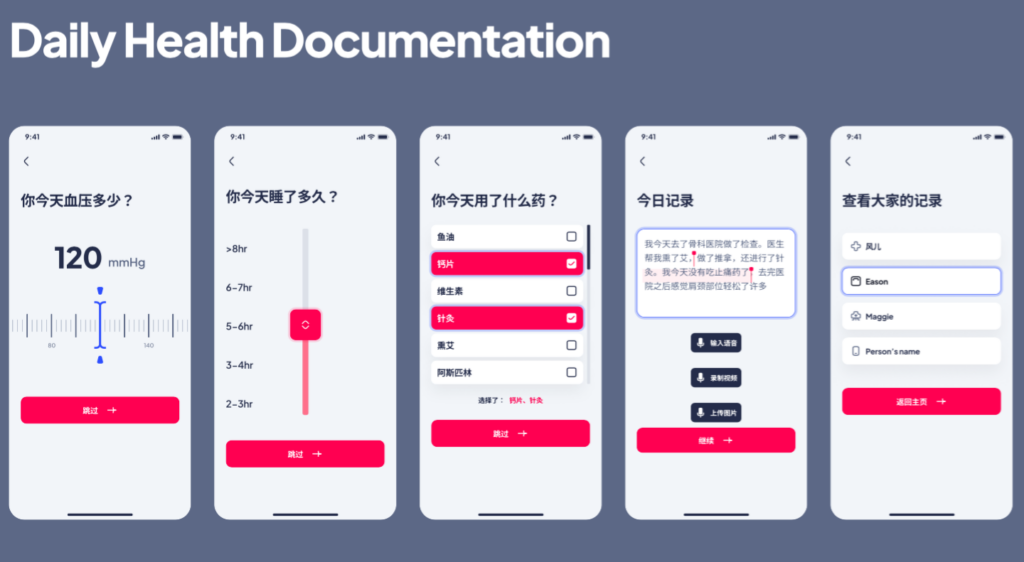
In the third section “Have you documented today”, the users can choose a way to document one aspect of their health status each day. They have the options such as recording the blood pressure, sleeping time, and medicine taken, but they also have the flexibility to document whatever they like. Users will be able to choose whether the information is public or not to be viewed by other users, but their completion status will be visible to every user.

In final section “Have you shared today”, the users will share one piece of information that enhance the community knowledge about health. It can be any information, ranging from another record of their own health status to a website that explain the symptoms of a disease. The information will be visible to every user in the community, and each user can comment and react to each other’s information to critically assess the accuracy and reliability of the information.
The highlight of this product is that I, as the learning designer, will also be a member of this learning community to interact with my parents. This is a critical pivoting moment in my design journey because my original design idea was towards a resource-guide-like mini program, in which only my parents would participate because my academic expertise made me a contributor but not necessary a consumer of the product. However, after several rounds of construct and co-design with my parents, we arrived in a more interactive and motivating product. Because of my participation as a user, my parents expressed tremendous interest to actually use the product for a long period as a family instead of treating it as another burden to consume. This design experience really pushed me to think critically about the “hierarchy” and relationship between learning designers and the users, especially during the seemingly one-sided design process.
